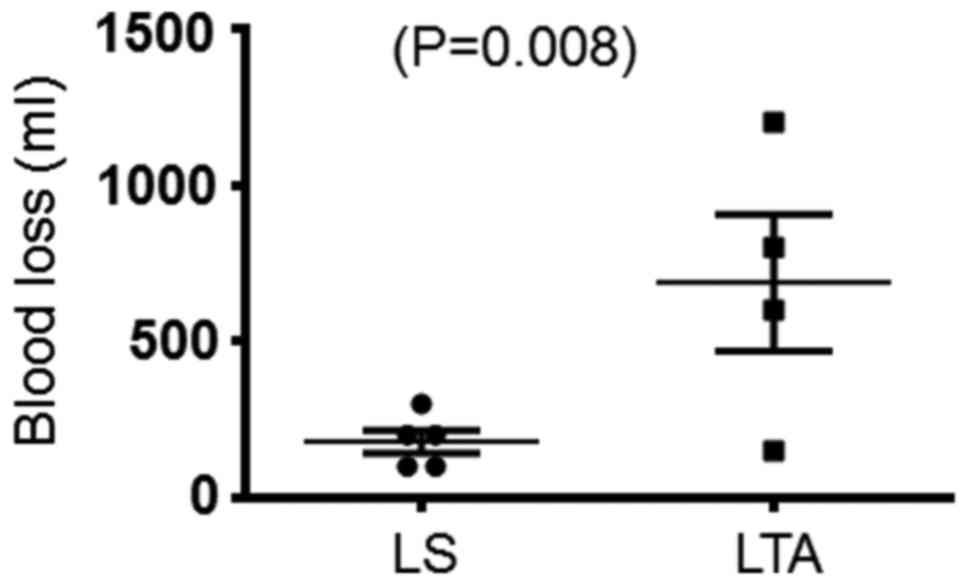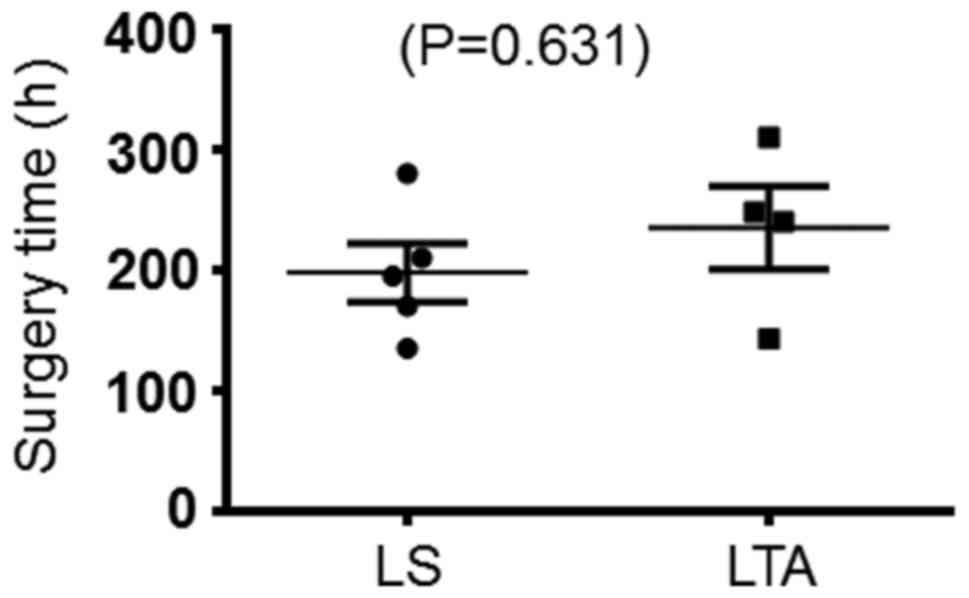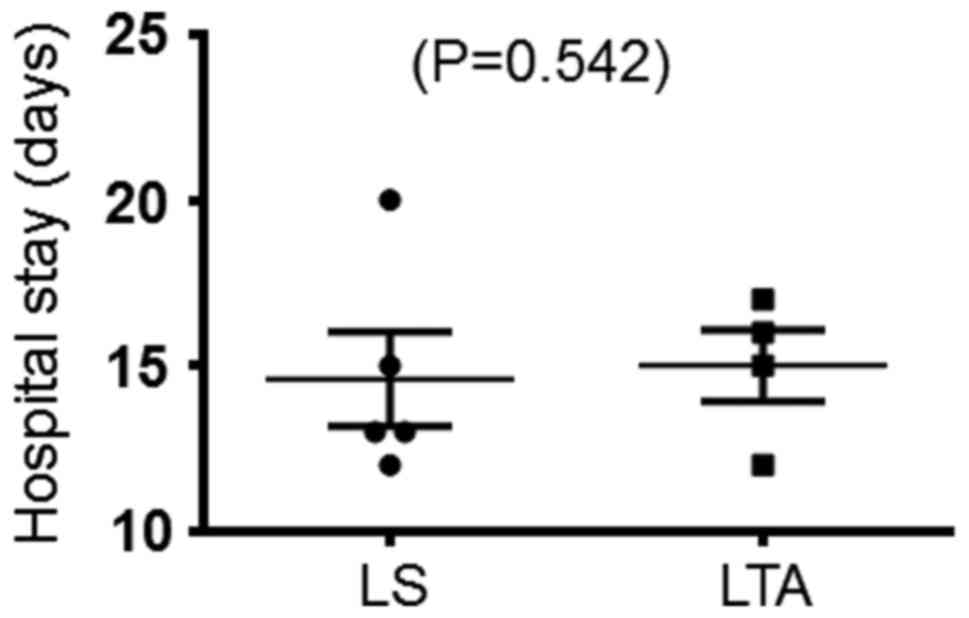|
1
|
Barillot I, Horiot JC, Cuisenier J,
Pigneux J, Schraub S, Rozan R, Pourquier H, Daly N, Vrousos C,
Keiling R, et al: Carcinoma of the cervical stump: A review of 213
cases. Eur J Cancer. 29A:1–1236. 1993.
|
|
2
|
Hellström AC, Sigurjonson T and Pettersson
F: Carcinoma of the cervical stump. The radiumhemmet series
1959–1987. Treatment and prognosis. Acta Obstet Gynecol Scand.
80:152–157. 2001. View Article : Google Scholar : PubMed/NCBI
|
|
3
|
Diaz-Feijoo B, Gil-Moreno A, Puig O,
Martínez-Palones JM and Xercavins J: Total laparoscopic radical
trachelectomy with intraoperative sentinel node identification for
early cervical stump cancer. J Minim Invasive Gynecol. 12:522–524.
2005. View Article : Google Scholar : PubMed/NCBI
|
|
4
|
Miller BE, Copeland LJ, Hamberger AD,
Gershenson DM, Saul PB, Herson J and Rutledge FN: Carcinoma of the
cervical stump. Gynecol Oncol. 18:100–108. 1984. View Article : Google Scholar : PubMed/NCBI
|
|
5
|
Nass JM, Brady LW, Glassburn JR and
Prasasvinichai S: The radiotherapeutic management of carcinoma of
the cervical stump. Int J Radiat Oncol Biol Phys. 4:279–281. 1978.
View Article : Google Scholar : PubMed/NCBI
|
|
6
|
Prempree T, Patanaphan V and Scott RM:
Radiation management of carcinoma of the cervical stump. Cancer.
43:1262–1273. 1979. View Article : Google Scholar : PubMed/NCBI
|
|
7
|
Wolff JP, Lacour J, Chassagne D and Berend
M: Cancer of the cervical stump. Study of 173 patients. Obstet
Gynecol. 39:10–16. 1972.PubMed/NCBI
|
|
8
|
Koh WJ, Greer BE, Abu-Rustum NR, Apte SM,
Campos SM, Cho KR, Chu C, Cohn D, Crispens MA, Dorigo O, et al:
Cervical Cancer, Version 2.2015. J Natl Compr Canc Netw.
13:395–404. 2015. View Article : Google Scholar : PubMed/NCBI
|
|
9
|
Johnson CJ, Graff R, Moran P, Cariou C and
Bordeaux S: Breast cancer stage, surgery and survival statistics
for Idaho's National Breast and Cervical Cancer Early Detection
Program population, 2004–2012. Prev Chronic Dis. 12:E362015.
View Article : Google Scholar : PubMed/NCBI
|
|
10
|
Rose J, Beaulac J, Howlett R and Kan L;
Cervical Cancer Prevention and Control Network, : Cervical cancer
in Canada: A response to the release of the CCS/NCIC Cancer
Statistics 2006. J Obstet Gynaecol Can. 28:678–679. 2006.
View Article : Google Scholar : PubMed/NCBI
|
|
11
|
Bray F, Carstensen B, Møller H, Zappa M,
Zakelj MP, Lawrence G, Hakama M and Weiderpass E: Incidence trends
of adenocarcinoma of the cervix in 13 European countries. Cancer
Epidemiol Biomarkers Prev. 14:2191–2199. 2005. View Article : Google Scholar : PubMed/NCBI
|
|
12
|
Bray F, Loos AH, McCarron P, Weiderpass E,
Arbyn M, Møller H, Hakama M and Parkin DM: Trends in cervical
squamous cell carcinoma incidence in 13 European countries:
Changing risk and the effects of screening. Cancer Epidemiol
Biomarkers Prev. 14:677–686. 2005. View Article : Google Scholar : PubMed/NCBI
|
|
13
|
Hannoun-Lévi JM, Peiffert D, Hoffstetter
S, Luporsi E, Bey P and Pernot M: Carcinoma of the cervical stump:
Retrospective analysis of 77 cases. Radiother Oncol. 43:147–153.
1997. View Article : Google Scholar : PubMed/NCBI
|
|
14
|
Maggi R, Bortolozzi G, Mangioni C, Uderzo
A, Pisani G and Candiani GB: Residual cervical stump cancer (true
cancer) and residual cancer of the cervical stump (coincident
cancer). Casuistics and therapeutic results in the period
1955–1979. Eur J Gynaecol Oncol. 6:92–94. 1985.PubMed/NCBI
|
|
15
|
Hellström AC, Hellman K, Pettersson BF and
Andersson S: Carcinoma of the cervical stump: Fifty years of
experience. Oncol Rep. 25:1651–1654. 2011.PubMed/NCBI
|
|
16
|
Lee CL, Huang KG, Wang CJ, Yen CF and
Soong YK: Radical laparoscopic surgery for carcinoma of the
cervical stump. J Am Assoc Gynecol Laparosc. 7:241–244. 2000.
View Article : Google Scholar : PubMed/NCBI
|
|
17
|
Liang Z, Xu H, Chen Y, Li Y, Chang Q and
Shi C: Laparoscopic radical trachelectomy or parametrectomy and
pelvic and para-aortic lymphadenectomy for cervical or vaginal
stump carcinoma: Report of six cases. Int J Gynecol Cancer.
16:1713–1716. 2006. View Article : Google Scholar : PubMed/NCBI
|
|
18
|
Parkar RB, Hassan MA, Otieno D and Baraza
R: Laparoscopic trachelectomy for cervical stump ‘carcinoma in
situ’. J Gynecol Endosc Surg. 2:58–60. 2011. View Article : Google Scholar : PubMed/NCBI
|
|
19
|
Shah AN and Olah KS: Cervical stump
carcinoma following subtotal hysterectomy. J Obstet Gynaecol.
22:7012002. View Article : Google Scholar : PubMed/NCBI
|
|
20
|
Bey P, Dartois D, Schoumacher P and Pernot
M: Carcinoma of cervical stump. A retrospective study (author's
transl). Bull Cancer. 67:90–92. 1980.PubMed/NCBI
|
|
21
|
Calais G, Leloup R, Chauvet B, Body G,
Lansac J, Bougnoux P and Le Floch O: Carcinoma of the cervical
stump. Retrospective analysis of 43 cases. Bull Cancer.
76:1103–1110. 1989.(In French).
|
|
22
|
Kovalic JJ, Grigsby PW, Perez CA and
Lockett MA: Cervical stump carcinoma. Int J Radiat Oncol Biol Phys.
20:933–938. 1991. View Article : Google Scholar : PubMed/NCBI
|












